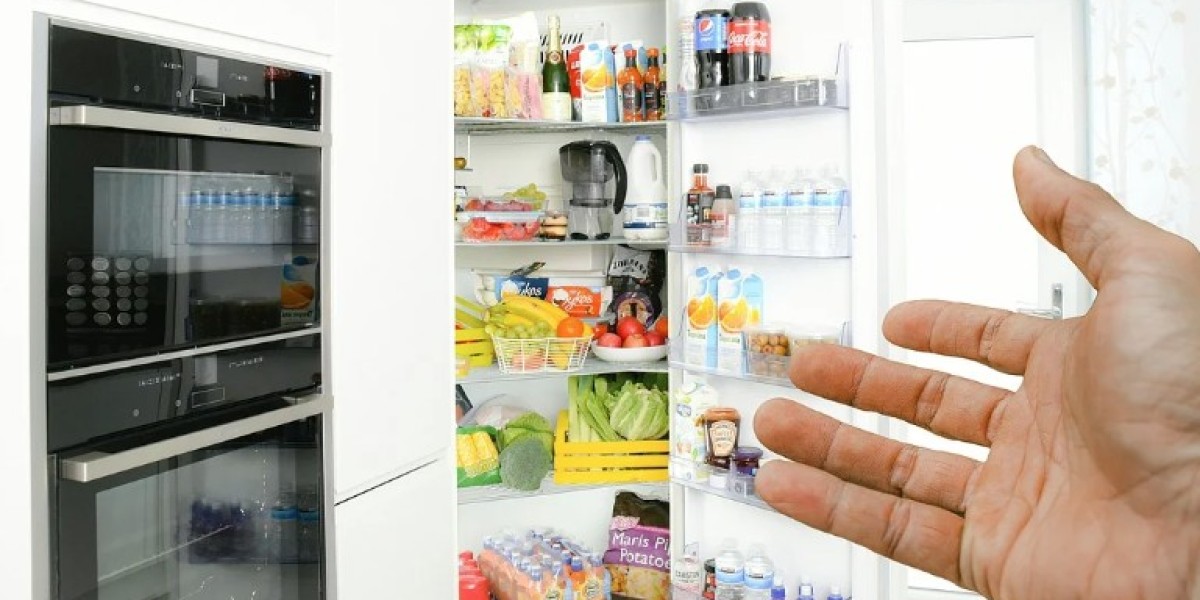Commercial refrigeration is a cornerstone of the foodservice industry, playing a critical role in preserving food quality, ensuring safety, and enhancing operational efficiency. Whether you’re starting a new restaurant, cafe, grocery store, or any other business that requires food storage, understanding the basics of commercial refrigeration is essential. This beginner’s guide will provide you with everything you need to know about commercial refrigeration, from selecting the right equipment to maintaining it properly.
Understanding Commercial Refrigeration
Commercial refrigeration refers to the equipment used to store perishable goods at safe temperatures in commercial settings. Unlike residential refrigeration, commercial units are designed to handle larger volumes of food, withstand frequent use, and meet stringent health and safety standards.
Types of Commercial Refrigeration Units:
Reach-In Refrigerators and Freezers: These units are commonly found in kitchens and come in various sizes. They are used for storing ingredients that need to be readily accessible.
Walk-In Coolers and Freezers: Ideal for larger operations, walk-in units provide ample storage space and are often used to store bulk items.
Under-Counter Refrigerators and Freezers: These compact units fit under countertops and are perfect for small kitchens or bars.
Display Cases: Used in retail environments to showcase products to customers while keeping them refrigerated.
Prep Tables: Combine refrigeration with a workspace, commonly used in sandwich shops and pizzerias.
Selecting the Right Commercial Refrigeration Unit
Choosing the right commercial refrigeration unit depends on several factors, including your business type, storage needs, and space availability. Here are some key considerations:
1. Capacity and Size:
Determine the amount of storage space you need based on your inventory and business volume.
Measure the available space in your kitchen or storage area to ensure the unit fits comfortably.
2. Energy Efficiency:
Look for units with Energy Star certification to ensure they meet energy efficiency standards.
Energy-efficient models reduce electricity consumption and lower operating costs.
3. Temperature Range:
Different types of food require different storage temperatures. Ensure the unit you choose can maintain the necessary temperature range for your products.
Some units offer adjustable temperature controls, allowing for greater flexibility.
4. Door Type and Configuration:
Decide between solid or glass doors based on your need for visibility and insulation.
Consider the door configuration (hinged or sliding) based on your space and access requirements.
5. Build Quality and Durability:
Choose units made from high-quality materials such as stainless steel, which is durable and easy to clean.
Check for features like sturdy shelving, heavy-duty compressors, and robust door gaskets.
Installation and Setup
Proper installation and setup are crucial for ensuring your commercial refrigeration unit operates efficiently and effectively.
1. Placement:
Position the unit in a well-ventilated area away from heat sources such as ovens and stoves.
Ensure there is enough space around the unit for proper air circulation.
2. Electrical Requirements:
Verify that your electrical system can support the unit’s power requirements. Commercial units often require dedicated circuits.
Hire a licensed electrician to handle the installation if necessary.
3. Leveling:
Ensure the unit is level to prevent doors from not sealing properly and to allow for efficient compressor operation.
Use adjustable feet or shims to level the unit if necessary.
4. Initial Temperature Setting:
Set the unit to the desired temperature and allow it to run empty for 24 hours to stabilize before adding any food items.
Maintenance and Care
Regular maintenance is essential to keep your commercial refrigeration unit running smoothly and efficiently.
1. Cleaning:
Clean the interior and exterior surfaces regularly using mild detergent and warm water.
Avoid using harsh chemicals or abrasive materials that could damage the surfaces.
2. Condenser Coils:
Dust and debris on the condenser coils can reduce efficiency. Clean the coils every three months with a brush or vacuum.
Dirty coils can cause the unit to overheat and lead to mechanical failures.
3. Door Seals:
Inspect door gaskets for cracks or wear and replace them if necessary. Damaged seals allow cold air to escape, reducing efficiency.
Clean the gaskets regularly to ensure they remain flexible and effective.
4. Defrosting:
If your unit does not have an automatic defrost feature, manually defrost it to prevent ice buildup.
Excessive ice can obstruct airflow and reduce cooling efficiency.
5. Professional Servicing:
Schedule annual maintenance checks with a professional technician to ensure all components are in good working order.
Regular servicing can identify potential issues before they become major problems.
Troubleshooting Common Issues
Despite regular maintenance, commercial refrigeration units can encounter problems. Here are some common issues and how to troubleshoot them:
1. Unit Not Cooling Properly:
Check the temperature settings to ensure they are correct.
Inspect the condenser coils for dust and clean them if necessary.
Verify that the door seals are intact and sealing properly.
2. Excessive Noise:
Unusual noises can indicate issues with the compressor or fan motor. Inspect these components for any signs of damage or wear.
Ensure the unit is level, as an uneven surface can cause vibrations and noise.
3. Water Leaks:
Water leaks often result from a blocked or clogged drain line. Clear the drain line to resolve this issue.
Inspect the drip pan for any cracks or damage and replace it if necessary.
4. Frost Buildup:
Check the door seals to ensure they are not allowing warm air to enter the unit.
Verify that the defrost cycle is functioning correctly and adjust if necessary.
Energy Efficiency Tips
Improving the energy efficiency of your commercial refrigeration unit can lead to significant cost savings and environmental benefits.
1. Regular Maintenance:
Keeping the unit clean and well-maintained ensures it operates at peak efficiency.
Regularly clean the condenser coils, door seals, and interior surfaces.
2. Optimize Storage:
Avoid overloading the unit, as this can obstruct airflow and reduce efficiency.
Arrange items to allow for proper air circulation, avoiding blocking vents.
3. Upgrade to Energy-Efficient Models:
Consider replacing older units with newer, energy-efficient models that consume less electricity.
Look for units with Energy Star certification and advanced insulation.
4. Monitor Temperature Settings:
Set the temperature to the optimal level for your needs. Avoid setting it lower than necessary, as this increases energy consumption.
Use a digital thermometer to ensure accurate temperature readings.
Conclusion
Investing in and maintaining commercial refrigeration is vital for any foodservice business. By understanding the different types of units available, selecting the right one for your needs, and following best practices for installation and maintenance, you can ensure your refrigeration system operates efficiently and effectively.
A well-maintained commercial refrigeration unit not only preserves food quality and safety but also contributes to cost savings and sustainability. As you navigate the world of commercial refrigeration, keep these guidelines in mind to make informed decisions and maximize the benefits for your business. With the right approach, your commercial refrigeration system will be a reliable asset, supporting your business’s growth and success for years to come.








